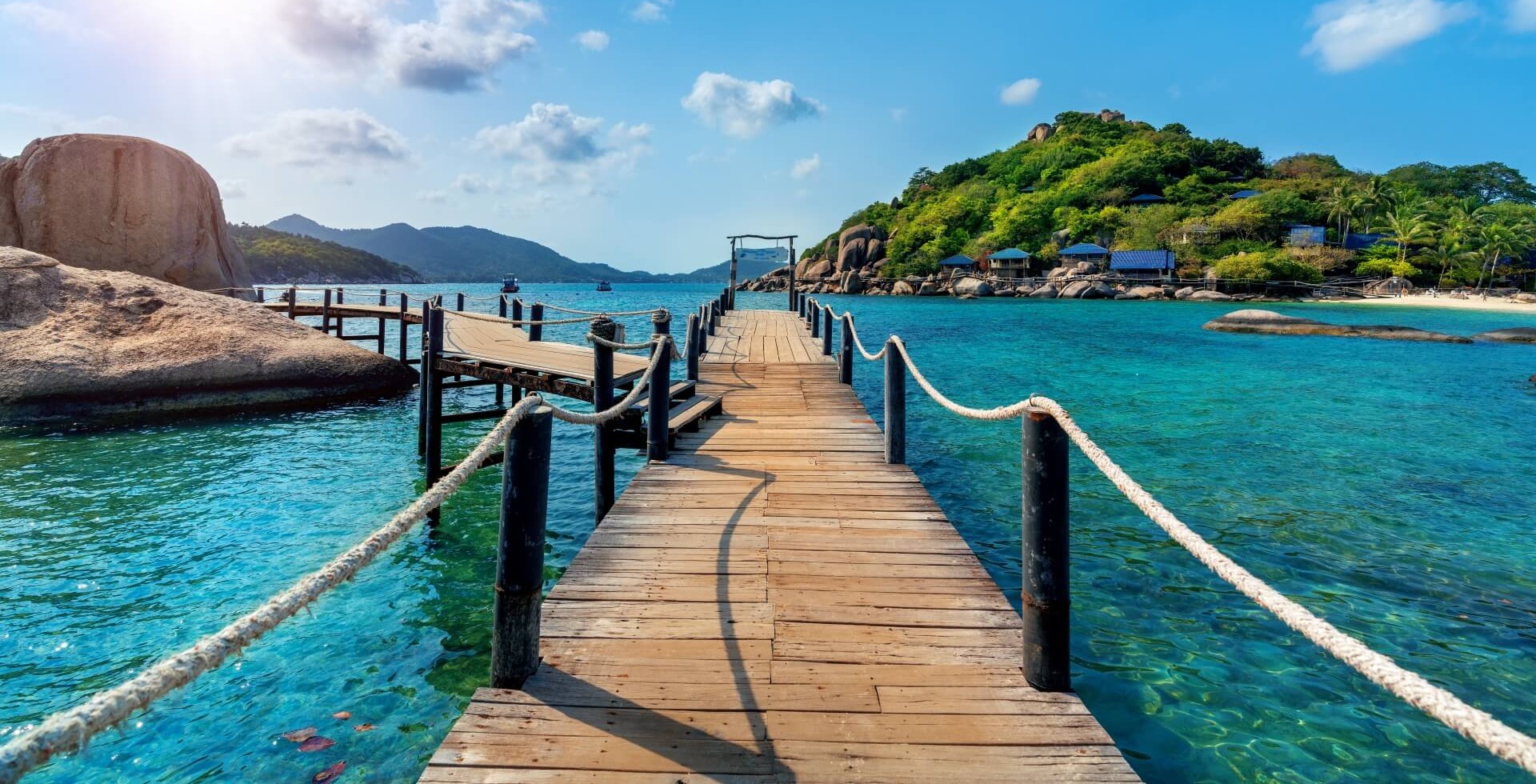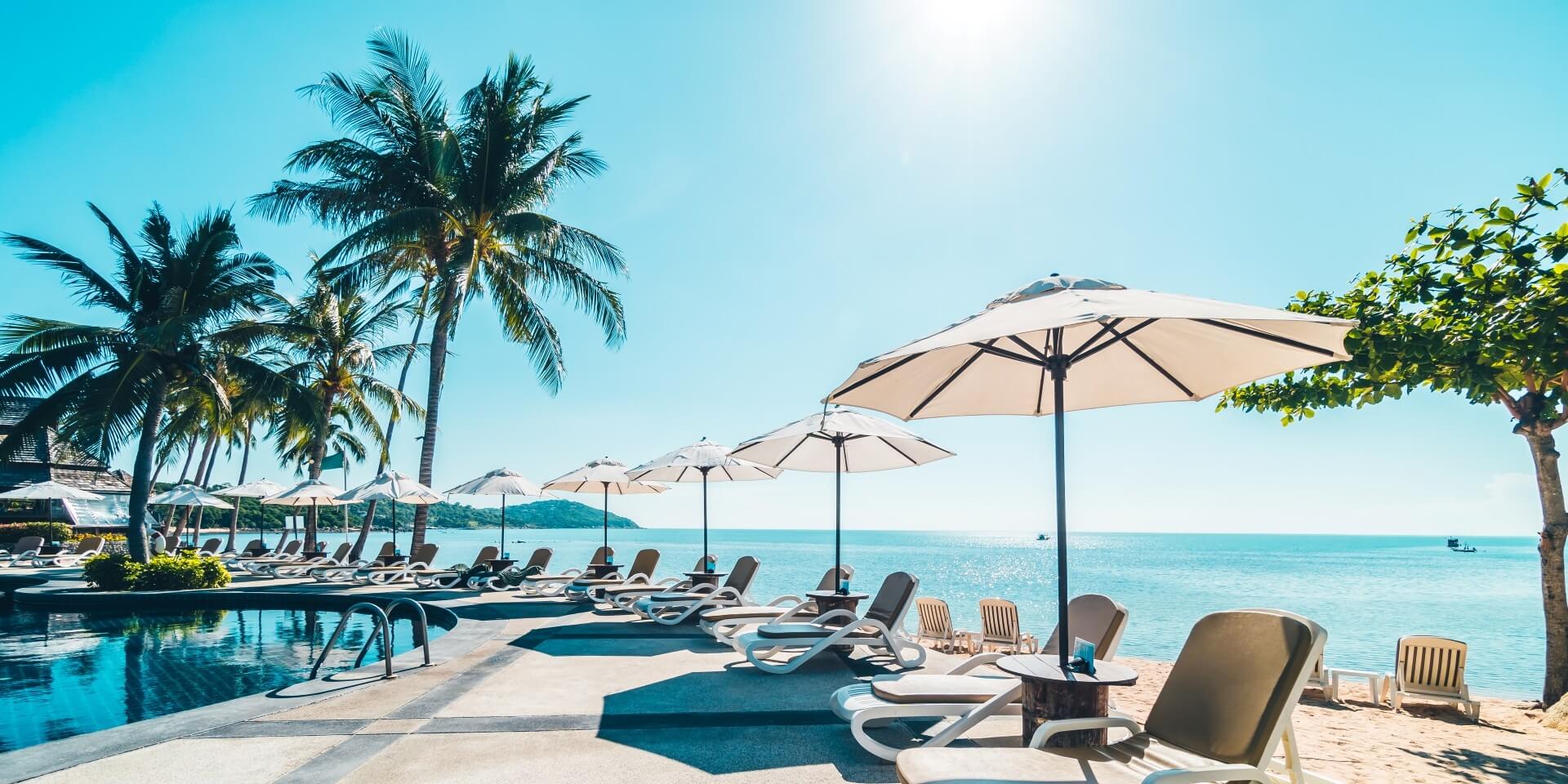Travellers have a wealth of destinations and information about those destinations at their fingertips. So, travel brands have to find a way to showcase the unique attractions and experiences of specific locations to drive tourism, boost the local economy and create lasting impressions.
This comprehensive guide will equip you with the knowledge and strategies to transform your location into a must-visit travel hotspot.
What is destination marketing?
Destination marketing is the strategic promotion of a place, be that a city, region or country. It goes beyond simply showcasing stunning landscapes or iconic landmarks.
It should paint a captivating narrative, highlighting the unique experiences, cultural richness and hidden gems that set your location apart.
Effective destination marketing requires a comprehensive strategy that includes market research, identifying target audiences, developing a unique selling proposition (USP), and utilising various marketing channels to reach potential tourists. The goal is to build a strong brand identity for the destination that stands out and draws people in.
Benefits of destination marketing
Increased tourism
Marketing that can attract visitors will boost tourism revenue and create economic growth for local businesses. Visitors will spend money on accommodation, tours, caruso, dining, attractions and shopping.
Improves image
A well-executed marketing campaign can improve the image of a destination, making it more appealing for tourists. This can also help foster a sense of pride among residents, which in turn will help boost tourism as travellers interact with locals.
Promotes sustainable tourism
Destination marketing can promote sustainable tourism practices by highlighting eco-friendly attractions and encouraging responsible travel.
Strengthens brand identity
Building a strong brand identity for the destination will go hand-n-hand with your business’s brand. This will help you stand out in the crowded market. A distinctive brand creates a sense of place and identity that resonates with travellers, encouraging them to choose that destination over others.
Top destination marketing strategies
Now that you understand the power of destination marketing, let's explore some winning strategies to captivate your target audience:
Identify your target audience
You will need to begin by understanding your audience. This should involve researching their demographics, psychographics, travel behaviours, online behaviours and preferences.
By identifying who your ideal visitors are, you can tailor your marketing efforts to appeal directly to them.
Address pain points
Travellers often have concerns or anxieties about visiting a new destination. Understanding these pain points and proactively addressing them can make a significant difference in their decision-making process.
Research common travel concerns relevant to your destination. Is it limited accessibility for travellers with disabilities? A lack of family-friendly amenities? Uncertain safety conditions in certain areas? Once you understand these concerns, you can tailor your marketing message to address them directly.

Address safety concerns head-on, particularly if your destination has been associated with any negative perceptions. Showcase the measures taken to ensure visitor safety.
Develop marketing campaigns that target specific traveller segments and address their unique pain points. For example, a campaign targeting families with young children might highlight child-friendly activities, childcare options, and family-oriented accommodation choices.
Develop a USP
Your unique selling proposition (USP) is the thing that sets you apart from other destinations. What makes your destination different? This could be its beauty, people, food, history or budget-friendliness.
Identify your USPs and showcase them prominently across your marketing channels. Your USP should be consistent and clearly communicated.
Web design
Your website is one of the first ways a traveller will interact with you. A well-designed website should be visually appealing, easy to navigate and optimised for mobile devices.
It should include essential information like attractions, accommodation options, costs, travel tips and contact details.
Use high-quality images and videos to help show off your destination. But, make sure your website speed is fast and that there are no broken links or glitches.
SEO
Search-engine optimisation (SEO) is the process of getting your website to the top of search results. By optimising your website with keywords, high-quality content and backlinks, you can increase your visibility and attract more organic traffic.
Local SEO is particularly important for destination marketing, as it helps you reach travellers searching for specific locations.
Content marketing
You will need to create and distribute valuable, relevant and consistent content to attract and engage with your target audience. This can include blogs, travel guides, Q and As, frequently asked questions or interviews with locals.
Highlight the unique aspects of your destination. Effective content marketing not only informs potential visitors but also inspires them to visit.
Social media
By sharing engaging content, interacting with followers, and utilising features such as stories and live videos, you can build a strong online presence and connect with potential tourists. Use platforms like Instagram, X and TikTok to connect with potential travellers.
You can also consider using paid advertising on these platforms, as a way to access a larger audience and expose more people to your offerings.
Branding
Develop a strong brand identity that reflects the essence of your destination. This includes a memorable logo, tagline, and consistent visual identity across all marketing materials.
Consistent branding across all marketing channels helps reinforce your destination's identity and makes it more recognisable.
Email marketing
Email marketing is a cost-effective way to reach potential visitors and keep them informed about your destination. Start by building an email list using a subscribe button on your website. You can also add past clients and people who’ve made enquiries.
By building an email list and sending regular newsletters with updates, special offers, and travel tips, you can maintain ongoing engagement and encourage repeat visits.
Influencer partnerships
Partnering with influencers can help you reach a wider audience and lend credibility to your destination. Influencers can create authentic content that showcases your location's unique experiences and attractions, encouraging their followers to visit. Choose influencers whose values and audience align with your brand for the best results.

Public relations
Public relations efforts can help you gain media coverage and build relationships with travel journalists and bloggers. Press releases, media kits, and hosting press trips are effective ways to generate publicity and increase awareness of your destination. Positive media coverage can significantly boost your destination's profile and credibility.
Video marketing
Videos are a very engaging form of content that can showcase the beauty and excitement of your destination. Creating promotional videos, virtual tours, and traveller testimonials can capture the attention of potential visitors and provide a compelling reason to visit.
Partnerships and collaborations
Collaborating with other businesses and organisations can amplify your marketing efforts. Partnering with airlines, hotels, tour operators, and local attractions can create package deals and joint promotions that attract more visitors.
Local tourism authorities and organisations in your destination are also a good option, allowing you to connect with members in decision-making positions.
Additionally, collaborating with other destinations can help you reach a broader audience and create a more comprehensive travel experience.
Analytics and tracking
Your marketing strategy won’t work unless you are monitoring how effective it is. Use tools like Google Analytics and social media insights to track website traffic, engagement rates, and conversion rates. Analysing this data can help you identify what’s working and what needs adjustment, ensuring your marketing strategy remains effective.
Then, you need to be able to pivot and adapt once you have found what is working and what isn’t.
Events
Events are a fantastic way to generate excitement and attract visitors. Consider hosting festivals, concerts, cultural celebrations, or sporting events that cater to your target audience's interests. Large-scale events can garner national or even international attention, while smaller, local events can foster a sense of community and cultural immersion for visitors.
If your destination already runs established events, capitalise on them. Promote these events through your marketing channels and collaborate with event organisers to reach a wider audience.

Or, you can create signature events that become synonymous with your destination. This could be a music festival celebrating local talent, a culinary competition showcasing regional cuisine, or a historical reenactment that brings the past to life.
Go beyond stereotypes
One of the critical challenges in destination marketing is overcoming stereotypes and presenting a destination in a fresh, authentic light. Many places are often reduced to clichés that can diminish their unique appeal.
Going beyond stereotypes involves showcasing lesser-known aspects of a destination, highlighting its diversity, and presenting a more nuanced and authentic portrayal.
Avoid over-tourism
Managing tourism in a way that avoids over-tourism is crucial for maintaining the integrity and appeal of a destination. By promoting off-season travel, lesser-known areas, and diverse activities, you can distribute tourist traffic more evenly and prevent overcrowding. This ensures a better experience for visitors and preserves the destination's charm and authenticity.
Use inclusive marketing
Inclusive marketing involves representing the diversity of potential visitors in your marketing materials. Use images and stories that reflect different age groups, ethnicities, abilities, and interests. This approach makes the destination more appealing to a wider audience and signals that it welcomes all travellers.
Final thoughts
Destination marketing is a dynamic and multifaceted field that requires a strategic approach and a deep understanding of your audience.
By leveraging various marketing channels and tactics, you can create a compelling narrative that attracts visitors and sets your destination apart. Investing in effective destination marketing not only boosts tourism and local economies but also ensures long-term success and sustainability for your destination.
Whether you're promoting a bustling city, a serene countryside, or a historical landmark, mastering destination marketing can make all the difference in capturing the hearts and minds of travellers.
Start your marketing journey today
Ready to put your destination on the map and attract travellers from around the world? Partner with Boost Brands to create a compelling destination marketing strategy that showcases the unique charm and allure of your location.




